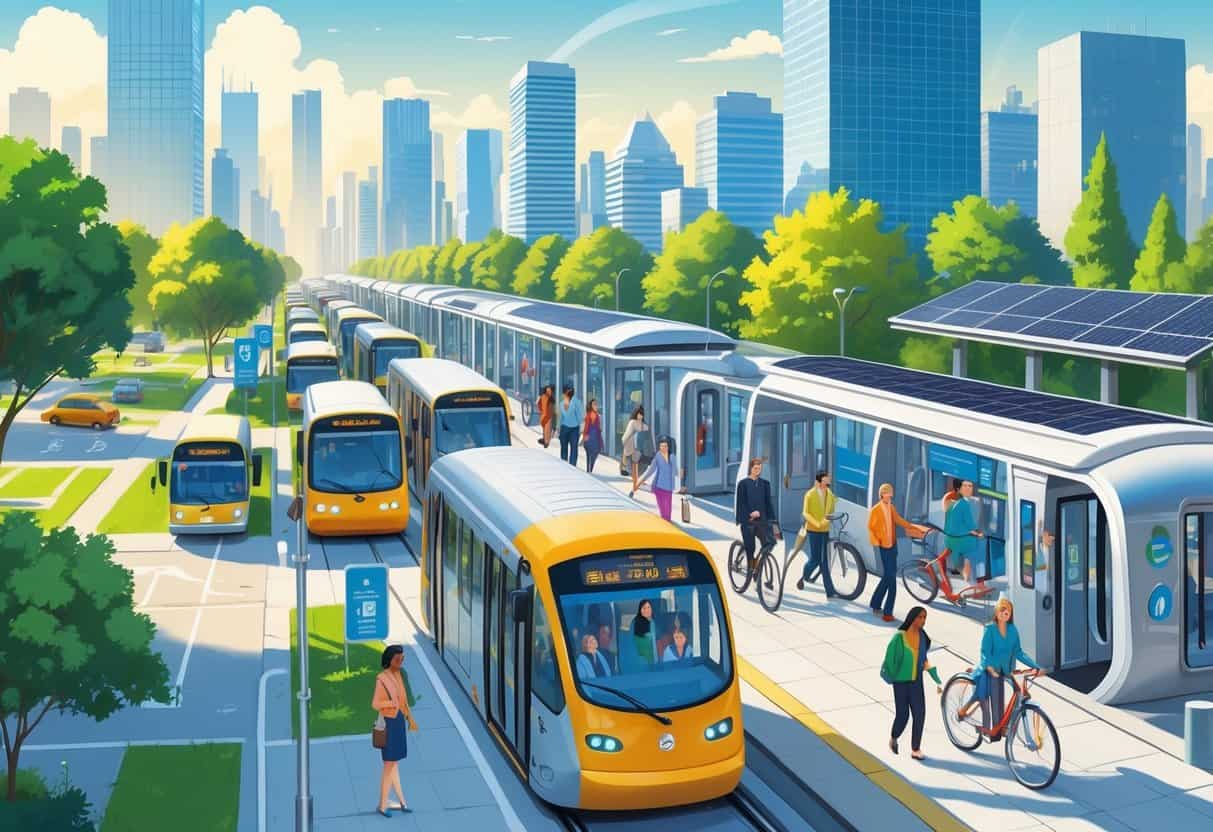Finding a city with good public transportation can make your daily commute a whole lot easier. Some U.S. cities really stand out for having transit systems that actually help people get around quickly and reliably.
Cities like Washington, D.C., Boston, and San Francisco offer some of the best public transportation for commuters. Their networks cover large areas and can cut down travel times.

These cities usually have subways, buses, and light rail connecting neighborhoods to business districts. That means less time fighting traffic and fewer parking headaches.
If you depend on public transit, living somewhere with strong services can really boost your quality of life—and maybe even save you some cash.
Key Takeaways
- Some cities have transit systems that cover wide areas pretty efficiently.
- Reliable public transportation can seriously cut down your commute time and stress.
- The best cities offer multiple transit types that connect key places well.
Top Cities with Excellent Public Transportation for Commuters
A handful of cities offer public transit with frequent service, easy access, and coverage across tons of neighborhoods. They also use tech and smart planning to help reduce wait times and crowding.
New York City
New York City’s subway runs 24/7, with 472 stations across four boroughs. It’s massive, honestly—one of the busiest networks out there.
You can get to most corners of the city without needing a car. Buses and commuter rails connect the suburbs to Manhattan, and a single MetroCard lets you transfer between buses, subways, and even some ferries.
The system gets regular upgrades with new trains and better signals. Still, it’s not perfect—rush hour crowds can get intense, and delays do happen. But the coverage is hard to beat for most commuters.
Tokyo
Tokyo’s transit system is famous for being on time and efficient. You’ll find several subway and train lines run by different companies, but switching between them is surprisingly smooth.
Trains run every few minutes, even when it’s not rush hour. The network covers the whole metropolitan area, so you really don’t need a car to get around.
Stations have clear signs in English and Japanese, which is a lifesaver for visitors. The system is clean, safe, and somehow manages to handle massive crowds thanks to high-frequency service and strict schedules.
Singapore
Singapore’s public transport is modern and spotless, focusing on trains and buses. The Mass Rapid Transit (MRT) system links up key urban centers and residential areas efficiently.
Trains run frequently from about 5 a.m. to midnight, and there are plans to extend those hours soon. MRT stations are well-lit, air-conditioned, and have lifts and escalators for accessibility.
The bus network fills in the gaps where the trains don’t go. You can pay for both with the same contactless card. It’s reliable and designed with smart growth in mind.
Key Features of High-Quality Commuter Transit Systems
A good commuter transit system gets you where you need to go quickly and without a bunch of extra hassle. It covers wide areas and keeps prices reasonable.
System Coverage and Accessibility
A solid transit system should link up most parts of the city and suburbs. That way, you don’t have to take long detours or walk forever to get where you’re going.
Good coverage means buses, trains, and trams that actually work together. Stations and stops need to be easy to access, with ramps, elevators, and clear signs for everyone—including folks with disabilities.
Ideally, you’ll find transit within walking distance of your home or job. Frequent, reliable service means less waiting and a more predictable trip.
Affordability and Value for Commuters
Transit costs should fit your budget and still get you where you need to go reliably. Affordable fares encourage more people to skip driving.
A lot of cities offer monthly passes or discounts for students and seniors, which helps. Value isn’t just about price, though—it’s about comfort, safety, and getting there on time.
Clean, well-maintained vehicles and frequent service really make a difference. When you pay less but still get decent service, that’s when the system is working well for commuters.
Comparing Commuter Experiences in Leading Cities
Taking public transportation in top cities comes with different experiences. Service frequency, reliability, and how well different modes connect can really shape your daily commute.
Frequency and Reliability of Services
In places like Seattle and Chicago, buses and trains run often—sometimes every 10-15 minutes during peak times. That means you’re not stuck waiting long, which is always a plus.
Reliability is generally solid in these cities. Trains and buses usually stick to their schedules, so you can plan your day without too much worry.
Boston’s transit system, for example, is known for staying on time most days. Of course, even the best cities deal with breakdowns or traffic jams now and then.
But the important thing is how quickly they bounce back, keeping your commute from turning into a total mess.
Intermodal Connectivity
Your commute gets a lot easier when different types of transportation actually link up. Cities like Arlington, Virginia, and Seattle have managed to make transfers between buses, light rail, and subway lines feel pretty smooth.
This kind of connectivity lets you travel farther without standing around forever between modes. Clear signs and shared ticket systems mean you can switch from one type of transit to another without scrambling for new passes or worrying you’ll miss your ride.
In places like New York City, you can mix and match subways, buses, and even ferries. That gives you a bunch of route options, so you can dodge crowded lines and maybe even shave some time off your trip.
